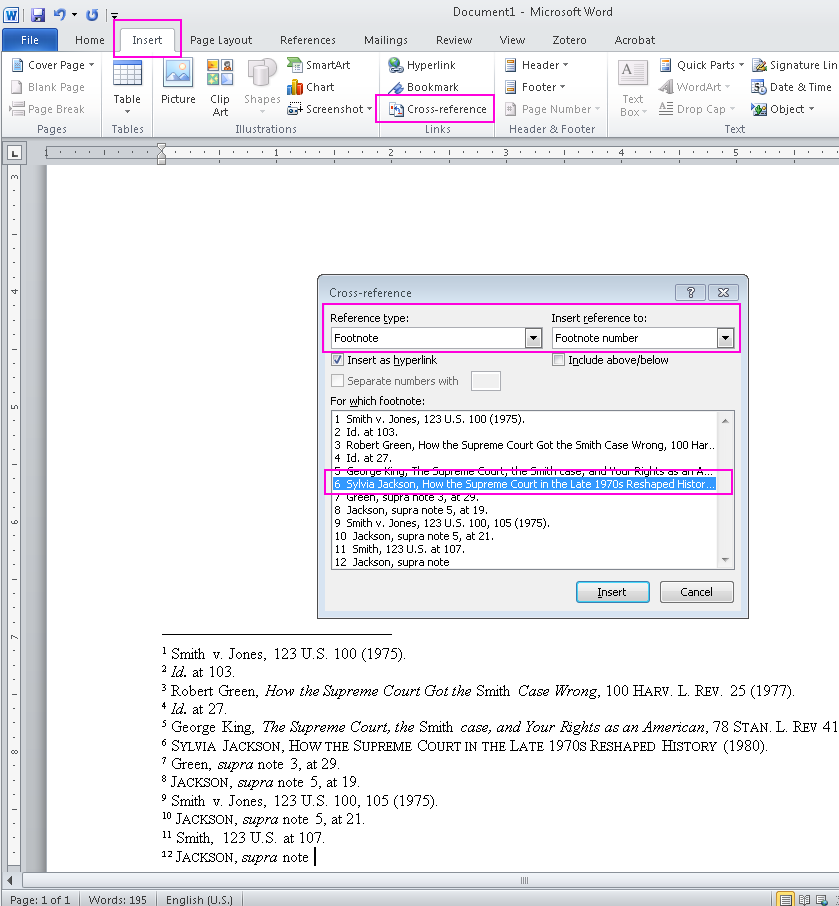
Start Writing.To add a citation, look for a button or menu item that says Add/Edit Citation or Zotero Insert Citation. Under the Layout tab, click on the Margins pull-down menu and select the setting that has 1″ on all sides. Highlight everything by clicking and dragging or pressing command A. The margins need to be one inch on all sides, and for some reason, this is not the default for this program.

The number 1 should appear right where your cursor is on the first page, and the number 2 should appear after your name on the second page. Make sure your cursor is just after your name. Insert your last name by deleting the and typing it in. Select the whole line of text by dragging over it.

Then it’s right where you want it no matter how you change the rest of your document.Ĭreate your header. It would be really annoying to have to go in and manually add that information to every page, and then move it to the correct place every time you add to or edit your paper, so you place it in a header. You need your last name and the page number in the top-right corner of every page. The header is added to the top of every page and only contains the info you place in it. (And the footer is different from a footnote, but that’s a whole other thing.) The heading containing your name and class info is in the main part of the document, and it only appears on the first page. The header is different from the heading. Place your cursor in front of the Works Cited title.Įither press the keyboard shortcut (command return) or find and click the Insert menu option, select Break, and select Page Break. Insert a Page-Break between the Body and the Works Cited Page You don’t have to do this, it just illustrates how the hanging indent will look. The effect won’t be apparent with only your placeholder text, but you can see it if you add text to go onto more than one line. Under the Indentation pull-down menu, select Hanging. Give Citations a Hanging IndentĬlick on the line spacing button and select Line Spacing Options. Same as with the placeholder title, just highlight Works Cited and click the Center button (or press command E). Go ahead and make sure that all of the boxes to the left of the pull-down (Left, Right, Before, and After) have a value of 0.

The amount of space will automatically be 0.5”, which is what you want. Under Indentation, find the pull-down menu, and select First line. But this time, you need to click on Line Spacing Options. Highlight the placeholder first paragraph.Ĭlick that same line spacing button under the Home tab. Or, if you prefer to use keyboard shortcuts, press command E. Highlight the title placeholder and click on the centering button. The four lines of the heading are fine, so leave them alone. Now you need to format individual sections separately. You won’t be skipping any extra lines anywhere, not between the heading and title, not between the title and first paragraph, nowhere. Under the Home tab, find and click the line spacing button. Make sure all of your text is highlighted (command A). If it’s not, change it in the pull-down menu next to the fonts. Your font should already be set at 12 point. Under the Home tab, click on the font pull-down menu and either scroll down until you find Times New Roman or type the font’s name into the bar at the top. Highlight all of the text by dragging the mouse over it or by pressing command A. This is one of the most important lessons that I try to teach my students when I’m explaining why they need to follow formatting. The default for this version of Word is Cambria, which looks a lot like Times New Roman.Īnd you should follow the specified formatting every time, even when it doesn’t seem like such a big deal, because a lot of life is simply about following directions. Some professors aren’t terribly picky about font. This will let you get all of your formatting out of the way, so that you can focus on the content of your writing. Then keep on going and put some placeholders in place. Go ahead and just start writing the information that needs to be in your heading before you worry about spacing and all that business.
Mla format for mac word how to#
Here’s how to set up all of the formatting that you need for an MLA-formatted research paper, or really any document you turn in that needs to be in MLA format.
Mla format for mac word Pc#
The Mac and PC versions of Microsoft Word are slightly different, so I’m giving you these walk-throughs with images specific to each version. Pretty soon you’ll be able to do this without even thinking about it. I know there’s a lot of steps to people who are new to MLA formatting, but it gets easier every time you do it.


 0 kommentar(er)
0 kommentar(er)
